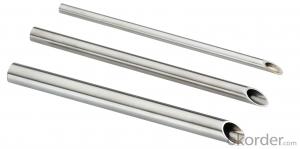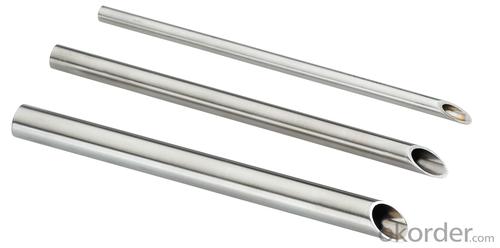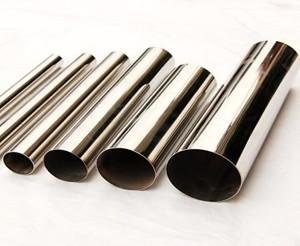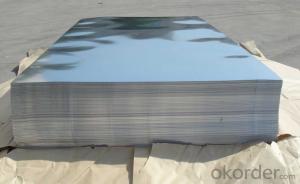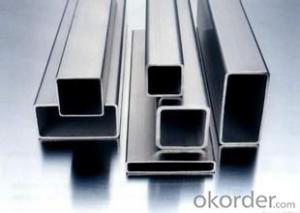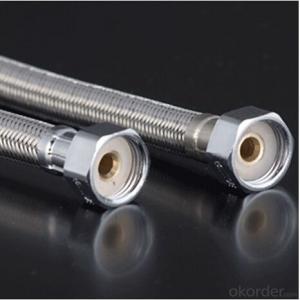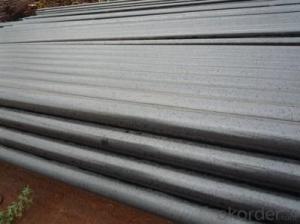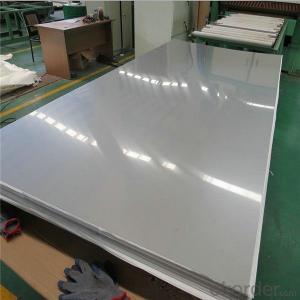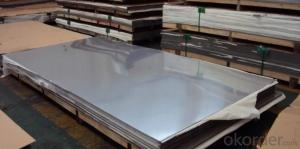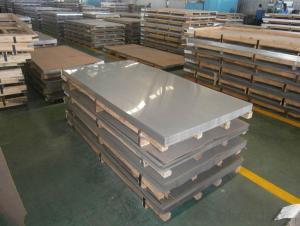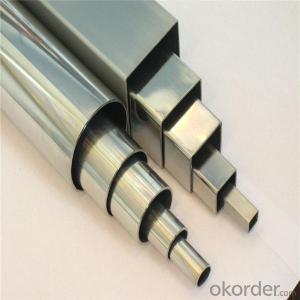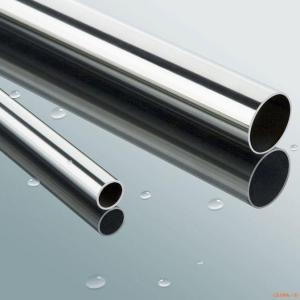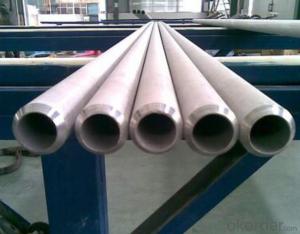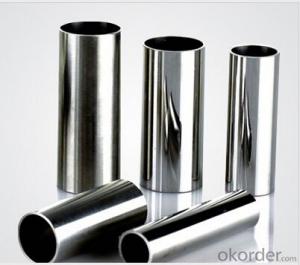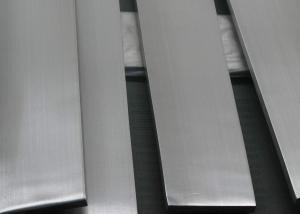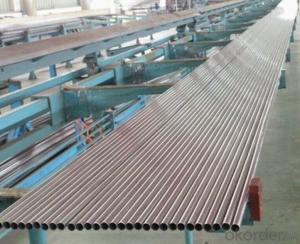Stainless Steel Sheet for Standard 200,300,400 Series
- Loading Port:
- Shanghai
- Payment Terms:
- TT OR LC
- Min Order Qty:
- 1000 kg
- Supply Capability:
- 10000 kg/month
OKorder Service Pledge
OKorder Financial Service
You Might Also Like
Packaging Detail: | Bundle or Container or as per customers requirement. |
Delivery Detail: | within 25 days after we receive an irrevocable L/Cor 30% deposit |
ASTM A335 Seamless Alloy-Steel Pipe
Standard: BS 1139, BS 3059-2, JIS G3454-2007
Grade: 10#-45#, 15NiCuMoNb5, 10Cr9Mo1VNb
Detailed introduction to ASTM A335 seamless alloy steel pipe:
ASTM A335 seamless alloy steel pipe
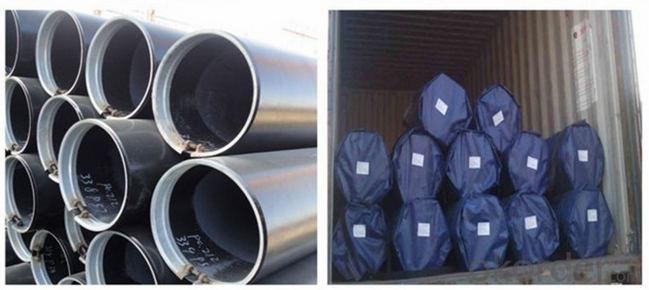
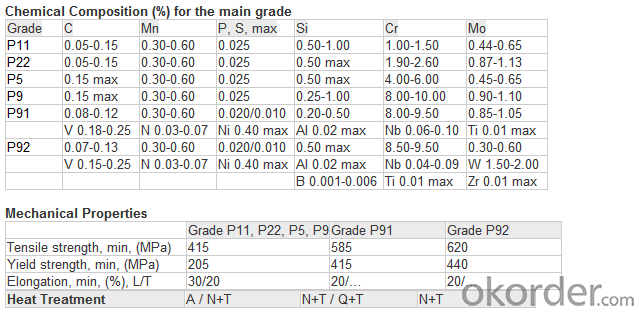
FAQ:
1) why you chose us ?
Professional Manufacturer and supplier of Steel pipe
More than 14 years’ professional producing experience
We can get the lowest ex-factory prices. The price are quite reasonable and it is lower than our commercial peers. also, we can guarantee the qualities of our products.
BV, ISO certificates and SGS test can be provided to assure the quality of our products.
2) Our minimum order quantity:
10 Metric Tons or one 20ft or 40ft Container.
3) How about the Delivery Time?
The steel pipe will be produced since we getting your deposit by T/T or Your original L/C. For normal size, some stocks in our factory now, we can supply once you need.
4)What kind of payment does your company support?
T/T, 100% L/C at sight, Cash, Western Union are all accepted.
5) Do you charge for the samples?
According to our company principle, we just charge for samples, you pay for the freight /courier charge.
6) Main market:
Mid East, South America, Africa, Southeast Asia, India etc
- Q: How do stainless steel pipes compare to polypropylene pipes?
- Stainless steel pipes and polypropylene pipes are two popular choices for various plumbing and industrial applications, and they have distinct characteristics that set them apart. Firstly, stainless steel pipes are known for their exceptional durability and strength. They can withstand high pressure and temperature conditions, making them suitable for applications that require robustness and reliability. On the other hand, polypropylene pipes are not as strong as stainless steel and may not be suitable for high-pressure environments. Secondly, stainless steel pipes have excellent corrosion resistance properties. They are highly resistant to rust, corrosion, and chemical reactions, making them ideal for plumbing systems that handle corrosive fluids or gases. Polypropylene pipes, while resistant to many chemicals, may not have the same level of corrosion resistance as stainless steel pipes. Thirdly, stainless steel pipes offer excellent hygiene and cleanliness. They have a smooth interior surface that discourages the growth of bacteria and biofilm, making them suitable for applications in the food and beverage industry or medical facilities. Polypropylene pipes, while relatively resistant to bacterial growth, may not provide the same level of cleanliness as stainless steel. Additionally, stainless steel pipes are known for their longevity and low maintenance requirements. They have a longer lifespan compared to polypropylene pipes, which may need to be replaced more frequently. Stainless steel pipes also require less maintenance and are less prone to leaks or cracks. However, it is worth noting that polypropylene pipes have their advantages too. They are lightweight, easy to install, and relatively cost-effective compared to stainless steel pipes. Polypropylene also has excellent thermal insulation properties, which can be beneficial in certain applications. Ultimately, the choice between stainless steel pipes and polypropylene pipes depends on the specific requirements of the project. Factors such as pressure, temperature, corrosion resistance, cleanliness, and budget should be considered to determine the most suitable option. Consulting with a professional plumber or engineer can help in making an informed decision.
- Q: What is the difference between annealed and tempered stainless steel pipes?
- The main difference between annealed and tempered stainless steel pipes lies in their structural properties. Annealed stainless steel pipes are heat-treated to eliminate internal stresses and improve ductility, making them more malleable and easier to work with. On the other hand, tempered stainless steel pipes undergo an additional heat treatment process to enhance their strength and hardness. This makes tempered pipes more resistant to deformation and able to withstand higher levels of pressure and stress.
- Q: Why pickling before cleaning stainless steel pipe oil?
- Because of this, it can make a good foundation for the formation of passive film on the premise of the effective place, the magazine and the oxide, so as to make the passivation film more compact and improve the passivation effect!!
- Q: Can stainless steel pipes be used for automotive applications?
- Stainless steel pipes are suitable for automotive applications, offering exceptional resistance to corrosion and heat. Because of this, they are an excellent option for automobiles in challenging environments, such as those with high temperatures, moisture, and road salt. Stainless steel pipes are frequently utilized in exhaust systems, fuel lines, and other vehicle components. Compared to other materials, they possess superior strength and durability, resulting in longer-lasting automotive parts and decreased necessity for frequent replacements. Furthermore, stainless steel pipes have a pleasing appearance and can be readily customized to meet precise design specifications for automotive use.
- Q: What is the weight of stainless steel pipes?
- The weight of stainless steel pipes can vary depending on their length, diameter, and wall thickness. Stainless steel is a dense material, so stainless steel pipes are generally heavier compared to pipes made from other materials. The weight of stainless steel pipes is usually measured in kilograms or pounds per meter or per foot. It is important to note that the weight will differ based on the specific grade of stainless steel used in the production of the pipes.
- Q: What is the maximum diameter for a stainless steel pipe?
- The maximum diameter for a stainless steel pipe can vary depending on the manufacturing capabilities and specifications, but commonly ranges from a few millimeters to several feet.
- Q: Can stainless steel pipes be embossed?
- Certainly, it is possible to emboss stainless steel pipes. Embossing refers to the technique of raising or pressing a pattern or design into a material like stainless steel, with the intention of creating a decorative or functional effect. This technique can be applied to a wide range of metal surfaces, including stainless steel pipes. To achieve this, specialized machinery and tools are employed to imprint the desired design onto the pipe's surface. The purpose of embossing can be twofold: it may enhance the visual appeal and texture for aesthetic reasons, or provide functional benefits like improved grip and slip prevention. In summary, embossing stainless steel pipes is indeed viable and can yield diverse desired outcomes.
- Q: How do stainless steel pipes compare to nickel alloy pipes?
- Both stainless steel pipes and nickel alloy pipes are widely utilized in various industries for their corrosion resistance properties, high strength, and durability. Nevertheless, there are noteworthy distinctions between these two materials that should be taken into account during comparisons. A primary difference lies in their composition. Stainless steel pipes consist mainly of iron and chromium, with additional elements like nickel and molybdenum added to enhance corrosion resistance. On the other hand, nickel alloy pipes are primarily composed of nickel, with the inclusion of other elements such as chromium, iron, and molybdenum. Regarding corrosion resistance, both stainless steel and nickel alloy pipes offer exceptional protection against corrosion. However, nickel alloy pipes are recognized for providing superior resistance to a broader range of corrosive environments, including highly acidic and alkaline conditions. This makes nickel alloy pipes more suitable for applications requiring extreme corrosion resistance, such as in chemical processing plants. Another factor to consider is the mechanical strength of the pipes. Stainless steel pipes are known for their high strength, making them suitable for applications requiring structural integrity and the ability to withstand high-pressure environments. Conversely, nickel alloy pipes offer even greater strength and toughness, making them ideal for applications involving high temperatures and extreme conditions, such as in the oil and gas industry. Cost is another aspect to consider when comparing stainless steel and nickel alloy pipes. Stainless steel pipes are generally more cost-effective and readily available compared to nickel alloy pipes. Nickel alloy pipes tend to be more expensive due to the higher cost of nickel and other alloying elements used in their production. Therefore, the choice between stainless steel and nickel alloy pipes often depends on the specific requirements of the application and budget constraints. In conclusion, both stainless steel pipes and nickel alloy pipes offer excellent corrosion resistance and mechanical strength. While stainless steel pipes are more cost-effective and commonly used in various applications, nickel alloy pipes provide superior corrosion resistance and strength in extreme conditions. Therefore, the selection between these two materials depends on the specific needs and requirements of the application at hand.
- Q: Can stainless steel pipes be insulated with cellulose?
- Indeed, it is possible to insulate stainless steel pipes with cellulose. Cellulose insulation is frequently selected to insulate pipes because of its exceptional thermal resistance and fire-resistant characteristics. It can be employed on a wide range of pipe materials, including stainless steel. There are various methods available for applying cellulose insulation to pipes, including using cellulose insulation blankets to wrap the pipes or filling the pipe cavities with loose-fill cellulose insulation. By insulating stainless steel pipes with cellulose, one can effectively prevent heat loss, decrease energy consumption, and maintain a consistent temperature within the pipes.
- Q: What is the difference between 17-7 and 15-7 stainless steel pipes?
- The main difference between 17-7 and 15-7 stainless steel pipes lies in their composition and properties. 17-7 stainless steel is a precipitation-hardening stainless steel that contains about 17% chromium and 7% nickel. It also includes aluminum, which enables it to be heat treated to achieve high strength and hardness. This type of stainless steel is known for its excellent corrosion resistance, good formability, and high strength. It is often used in applications that require high strength and good corrosion resistance, such as aerospace components, springs, and chemical processing equipment. On the other hand, 15-7 stainless steel is a semi-austenitic precipitation-hardening stainless steel that contains about 15% chromium and 7% nickel. It also includes 2% molybdenum, which enhances its corrosion resistance. This grade of stainless steel offers good mechanical properties, high strength, and excellent corrosion resistance. It is commonly used in applications that require high strength, good formability, and resistance to stress corrosion cracking, such as springs, washers, and medical devices. In summary, while both 17-7 and 15-7 stainless steel pipes offer excellent corrosion resistance and high strength, the difference lies in their composition and specific properties. 17-7 stainless steel contains aluminum for enhanced heat treatability, while 15-7 stainless steel includes molybdenum for improved corrosion resistance. The choice between these two grades depends on the specific requirements of the application, such as strength, formability, and resistance to corrosion or stress corrosion cracking.
Send your message to us
Stainless Steel Sheet for Standard 200,300,400 Series
- Loading Port:
- Shanghai
- Payment Terms:
- TT OR LC
- Min Order Qty:
- 1000 kg
- Supply Capability:
- 10000 kg/month
OKorder Service Pledge
OKorder Financial Service
Similar products
Hot products
Hot Searches
Related keywords
